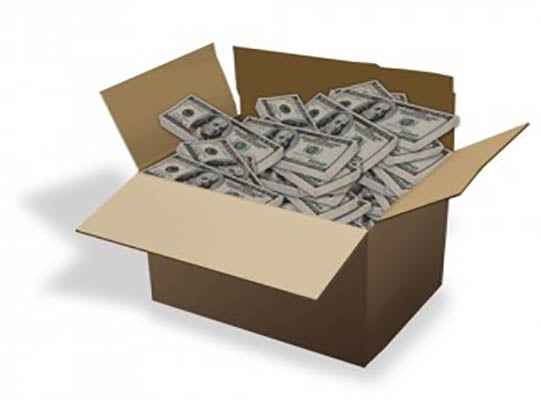Do you ship cash along with your packaged products?
As you ship your molded or extruded product, have you taken into account your real material and direct out-of-pocket production costs?
What about raw material price and order volume quantity fluctuations?
Did you consider the impact of your current production rate; reject rates, setup and line installation time for each start up?
All too often, plastic manufacturing business owners don’t even notice that they are producing some of their products at a loss and that they are, in fact, shipping cash directly to their customers! Are you one of them?
Every day that you produce your goods, all of these key costs components need to be tracked in relation to each product produced and how your true production results affect your cash flow. You may have an overall picture of your daily, weekly and monthly cash flow, but do you really know which products are the ones contributing to that cash flow?
Some products or even customers might be contributing more than their fair share to cover lower-margin products or even worse, carry negative-cash flow products. As a result, your best profitable customers might move to other suppliers for better priced products, while the other customers with low margins will order even more of these cash-negative products. This could lead to a very dangerous company-wide negative cash flow situation.
If you are not 100% certain, this may be the result of:
- Your internal systems are simply not equipped to track or report on the raw material: latest supplier price lists, last purchase price, average costs as well as landed average costs (i.e. important if you pay freight to purchase your raw material) and the variance between these costs as well as the standard cost used in establishing the sales price for your products;
- Inability to signal a cost variance ALERT when a new order is entered and, as importantly, BEFORE that order is confirmed with the customer and sent to production;
- Not producing and reviewing a daily report that calculates the net cash contribution (i.e. sales price minus cash cost per unit) of each product produced (net of rejects) to see if you are meeting your daily cash / margin requirement;
- Lack of at least one report that: calculates a true unit cost based on actual production results (efficiency and rejects) and the real average unit cost (or landed if freight is paid) times the volume shipped in a given period to understand which products and customers are responsible for your positive or negative cash flow.
If you suspect that these critical control parameters are not being realized in your organization, you should be gravely concerned.
Below, you’ll find a few helpful pointers.
Establish specific key controls:
Even if it’s done manually, a cost sheet needs to be created after each production run. Best of breed plastic processor have been doing this for a long time. This sheet calculates what the production time truly was based on both the machine setup and production, the reject quantity, the current raw material prices versus the original cost estimate used to determine the selling price. When a new order comes in, the latest raw material prices can be checked against that cost sheet and if you’re anticipating similar production results, it may be time to review the selling price with the customer.
Develop a tracking strategy:
All of the information in the cost sheet should be pulled directly from the shop floor. Too often, when owners dig deeper, they realize that the machine time, rejects and downtime information are not based on precise data, but are in fact an estimate because those numbers aren’t accurately recorded. This can be partly remedied with machine PLC monitoring and then comparing against the reported daily numbers. Management has to make sure these numbers always match, insist production staff pay close attention to the details and hold them accountable.
All packaged finished goods should have serialized bar-code labels that can be scanned. Rejects and downtime can be recorded on touch screen devices.
Daily cost control reports are still necessary, but developing a tracking strategy will greatly reduce the risk of error and save time.
Review your management reporting systems:
Once your shop floor data is properly tracked, it is important to bring that data into an automated reporting system. The cost sheet mentioned earlier is great, but it’s even more powerful if you can have cumulative values so that you can spot negative or positive trends over time. This is true of production efficiency, reject, downtime and raw material price variances which you would compare against your original standard costs established to set the selling price. Because plastic processors have to deal with multiple recipes or bills of material, sales price re-calculation must also consider partial recipe sub-component raw material price fluctuations. As a result, regenerating price lists to maintain or improve profit margins is very taxing and time consuming.
When evaluating the cost of a new system, remember that when you eliminate 10 hours of manual labor every week, you’ll ultimately save $10,000 a year, year after year.
We hope these suggestions will help your company become more profitable by better assessing and controlling your positive and negative cash flow.Please don’t hesitate to contact us to find out how we can provide the necessary insight and framework while working with your best people to implement this structure.

